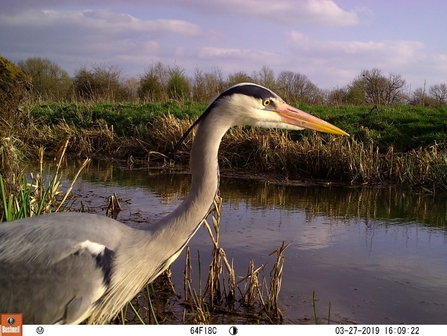There’s one thing that's certain on a nature reserve - there’s always more work to do than we have time for. Nature reserves are places of potential and possibility, and they are never ‘finished’. Even once we have the day to day management under control – paths are cleared, fences repaired – there’s always something new we could do to help wildlife. So how do we decide where to direct our efforts? How do we know if it’s working?
From local, historical knowledge, our collective experience, our theoretical knowledge of ecology and conservation principles, down to just observing what we see on the reserves, we’re constantly honing our knowledge. The more we know, the better able we are to manage nature reserves to the best of our ability and resources.
One vital part of that knowledge comes from Wildlife Surveys. These come in many forms but in essence involve counting one or many species under a given set of rules – e.g. in one particular area, or for a specific amount of time, at a specific time of day, et cetera. Crucially, they must be designed with a question in mind, such as, ‘how diverse are the plants in this hay meadow?’ or ‘which bird species use the nature reserve in winter?’ By collecting and analysing the right data we can get an idea of the answer to our question. No survey tells us with 100% accuracy because we only take look at a small sample of our target species (for example the total number of birds on the reserve), but we can build a picture of what’s there using a scientific method. If we repeat the surveys year on year using the same method, we can get an idea of how that species or group of species are changing over time.
At Nene Wetlands and Summer Leys, there are a wide range of Wildlife Surveys conducted by staff and volunteers, many of which (although not all) take place over Summer. Wetland Bird Surveys (WeBS) gather crucial data on our water birds in Winter, while our Breeding Bird survey in summer looks at which birds breed or show signs of breeding. We also regularly look at butterflies, reptiles, otter, bats, and aquatic invertebrates to see what’s living where. More infrequent surveys include our Rapid Grassland Assessment, which is as the name suggests, a fairly quick look at a patch of grassland to get an idea of what plants are living there. We may even conduct one-off surveys, such as a survey to measure the levels of human disturbance on birds, or to map the habitat types found across the whole reserve. By having a range of different species or groups of species that we look at, we can build a fairly rich picture of the wildlife that are using the reserves.
This information isn’t just gathered for its own sake. Survey data isn’t the only thing that feeds into our work plan, but it is vital information that we can use to inform practical management. By understanding what lives where, we can ensure we’re providing the best mix of habitats for the widest range of species. For example, if we survey a patch of wildflower-rich grass and find that there is far more hawthorn scrub in there than previously, we can go in and remove some or all of the hawthorn. If we didn’t, eventually the hawthorn would likely take over and we’d lose the nice wildflowers. Absence is often as interesting as presence on a survey; we may find that we have no records of a given bird species breeding on the reserve, when really it should be. This can trigger us to look more closely at why that bird isn’t breeding, and potentially make improvements to the habitat. Once we’ve made the improvements, we look to the surveys to see if they have been effective. From there we get more information about what practical management to do, and so the feedback loop goes on.
Deciding what practical management we do where is determined by lots of things, not least the amount of time and resources we have to conduct the work – but a crucial way of directing our efforts is to undertake Wildlife Surveys and use the results to help inform our management.


